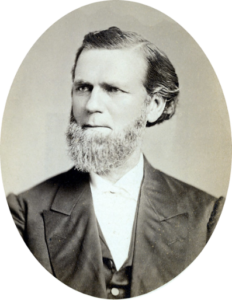History


Braxton Craven began teaching in the institute’s second year, but quickly had the role of principal thrust on him when York decided to pursue other endeavors. Craven, believed to be York’s second cousin, was raised in the austere Quaker home of a neighbor, where though he felt “oppressed,” he learned qualities that helped him bring great success to this new challenge. The school grew, and Craven did as well, obtaining honorary degrees for himself from other, larger institutions, including the University of North Carolina around 1851. It was at this time that Craven saw the need for the school to shift direction and join the “normal,” or teacher-training movement, convincing the state legislature to reincorporate it to Normal College. This allowed “certified” teachers to be graduated without outside examination, but the state funding it was also supposed to bring never materialized.
The need for financing was a constant task, and it led to Craven to the North Carolina Conference of the Methodist Episcopal Church, South. In 1856, he convinced the association to adopt Normal College. It was three years later that the pivotal event came when, as acknowledgement of the new support, the school was renamed Trinity College.
By the time of the Civil War, the significance of the college had grown as had its physical presence. A large, three-story brick building dominated the campus. The area around the school burgeoned as well. It was incorporated by the North Carolina General Assembly and the charter ratified on April 12, 1869. The legislation declares “The Town shall be two miles long from north to south, and one mile wide from east to west, the center of the Town to be the center of the principal College Building,” and established an election for a town magistrate and five commissioners.

